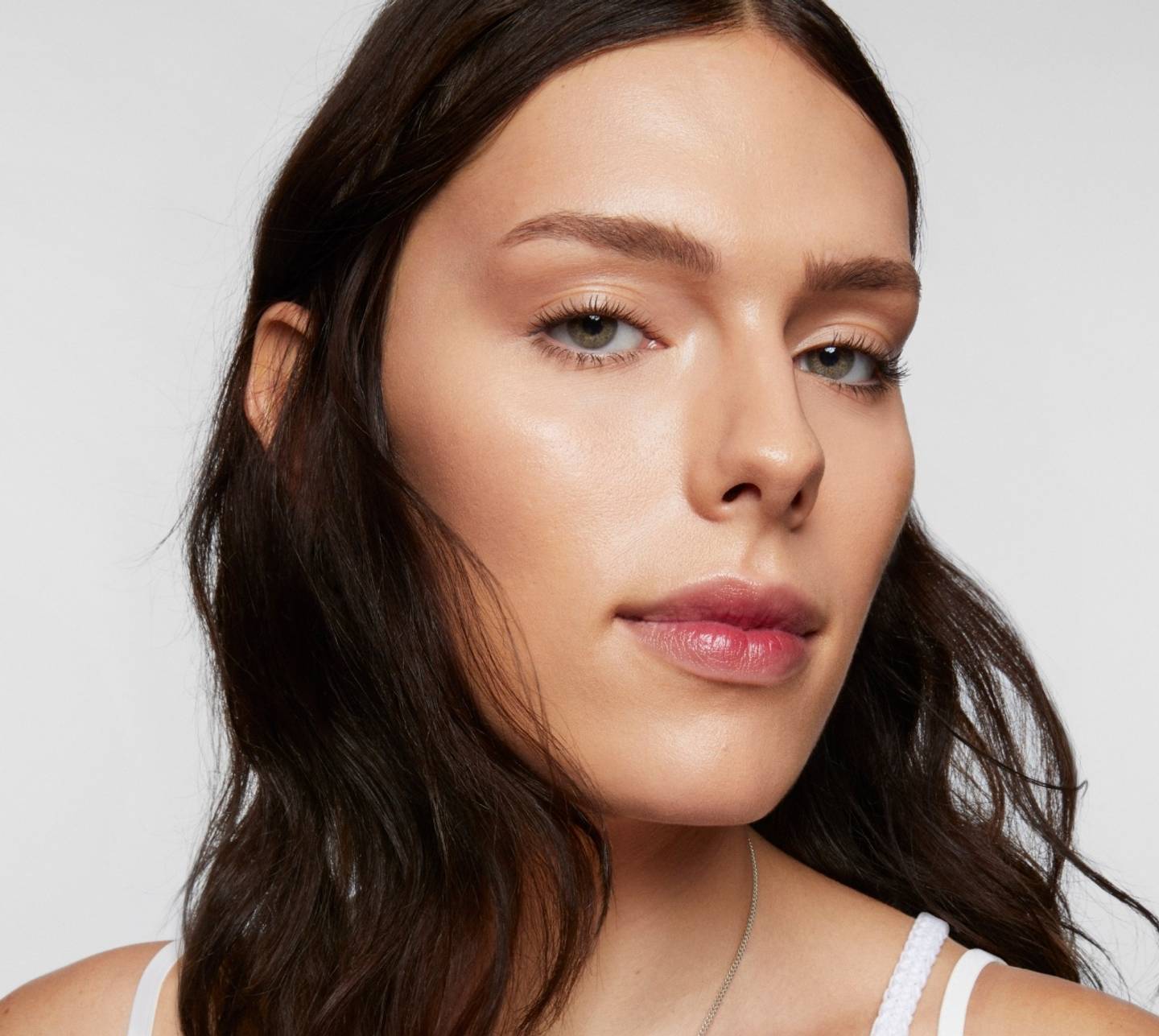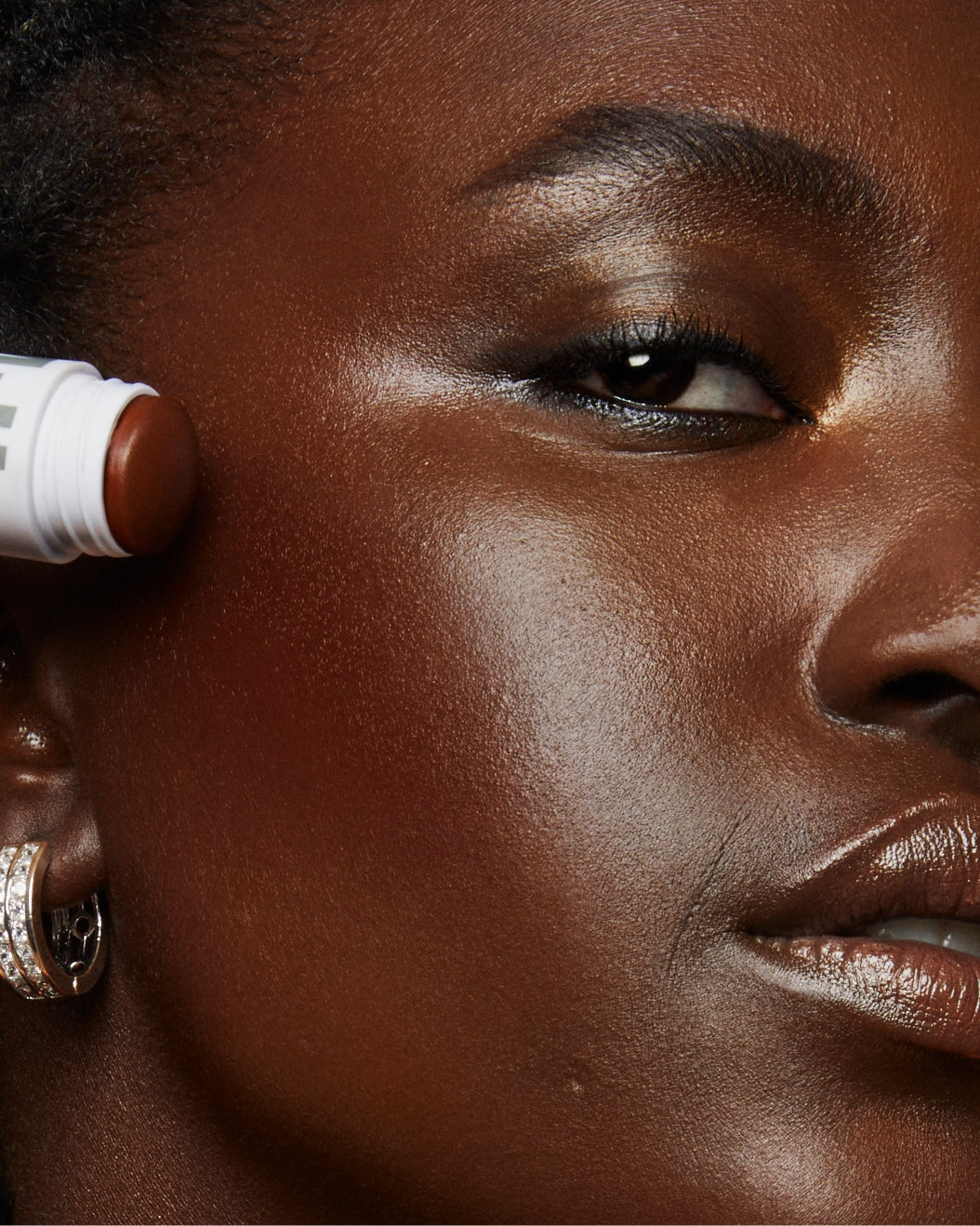Contouring is one of those trends that’s easier said (or demonstrated in a TikTok tutorial) than done IRL. For many, especially beginners, trying to determine between bronzer vs. contour can be the first point of confusion—they do, after all, look very similar. There’s also figuring out how to use 'em.
Although it gained mainstream popularity in the mid-2010s, “Contouring is a technique that adds dimension to your face and has been used by makeup artists for years,” says Sara Wren, Milk Makeup’s Director of Artistry. Since then, the idea of contouring has gotten a bit of a makeover in its own right, contributing to a riff on the OG called sculpting. “Sculpting is the same as contouring, but it's done a bit more naturally for a softer, more real-life effect suitable for daily wear,” Sara explains. “Sculpting enhances your features rather than trying to completely change your face shape.”
You can think of sculpting as a low-key, minimalist take on contouring. Nailing the technique comes down to the actual contour products you’re using. Before the trend was everywhere, achieving a sculpted look meant having to rely on cool-toned eyeshadows or even concealers. And remember when all you could get were powder bronzers... that worked for a limited shade range? These days, sculpting formulas are way more advanced and diverse. You can now find cream contour formulas that are pigmented, easy to blend, and inclusive across skin tones and undertones.
With that in mind, here's the difference between our best bronzer and contour sticks—and how to wield them to sculpt your face and create a sun-kissed glow like a pro. Do your skincare and grab your makeup brushes; it’s time to get to work. Read on for pro-approved makeup tips, then hit up our step-by-step guide on how to contour, the natural way.
What's the difference between contour shades and bronzer shades?If you’re still stuck on the whole bronzer vs. contour debate, we’ve got an easy way to remember the difference. “Bronzer is used to cultivate a warm, sun-kissed glow, whereas contouring is meant to mimic the natural shadows found in your face that help shape your bone structure,” says Sara. In other words, contour is for sculpting and creating definition while bronzing adds a summery warmth to your skin. To find the right contour shade, look for a cream contour stick or liquid-based product that isn’t too dark or too warm, says Sara. It should have cool, gray undertones, as is the case with our Sculpt Stick. “The best trick is to suck in your cheeks, see the shade of the shadow that’s created in the hollows, and find the color closest to that.” For bronzer, on the other hand, think of your skin tone when you’ve been out in the sun. Sara recommends pulling up a vacation pic on your phone and using it as your guide for your sun-kissed glow shade. Our Matte Bronzer lineup includes five warm-toned hues that come in a creamy, shimmer-free formula, so it’s easier than ever to find a match for your makeup routine. |
|
Where do I apply bronzer?
Apply Matte Bronzer “wherever the sun naturally hits your face,” such as your forehead, on the high points of your cheekbones, the bridge of the nose, and above your jawline, says Sara. Then, buff out the pigment with a bronzer brush for the most natural-looking results. She also recommends smoothing any extra onto your neck and chest for all-over, just-got-back-from-the-beach bronzing.
Where do I apply contour?
Contour goes anywhere you have natural shadows on your face. With Sculpt Stick, “draw a line around your hairline, and buff out towards your hair,” Sara says. “For a defined cheek, place it under your cheekbone—follow an imaginary line that runs from the corner of your mouth to your ear.” She also recommends applying your contour along the underside of your jawline, bringing it to the ear, and blending it well with a fluffy brush to make the area appear sharper. You can also add some to the sides of your nose and the creases of your eyes.
Can you use a bronzer to contour (and vice versa)?
Honestly, neither is a great idea. Bronzer and contour sticks are two different makeup products like foundation vs. concealer. “Use bronzer to create warmth, and use contour for enhancing natural shadows and sculpting, Sara says. However, you can (and should) learn how to use them together—they work great as a pair and add a glam je ne sais quoi to any makeup look.
How to use bronzer and contour togetherThe first rule to remember: “Sculpting always comes first,” says Sara. “This helps create your face shape and informs the best placement for bronzer, blush, and highlighter—in that order.” With that in mind, start with a cream contouring product, like our Sculpt Stick. Its creamy, blendable formula comes in four cool-toned shades and is super easy to apply. It also has a matte finish that works well with the other steps of your base makeup application. Once your contour product is blended, “Matte Bronzer can be swiped directly onto your skin from the bullet,” says Sara, who uses either a damp sponge for a glowy finish or a brush for targeted, matte application when she blends. This cream bronzer is super easy to apply, even if you’re on the go: “Fingers work well to soften edges and make the payoff look incredibly natural,” she explains. Then, you can stop there—or layer on Lip + Cheek for a pop of color, then Highlighter Stick onto high points of the face to make them noticeably glowy. Ultimately, the beauty of the bronzer vs. contour debate is there’s nothing to debate in the first place. They’re both necessary makeup products if you’re going for a sculpted, defined makeup look with a glowy vibe. They truly work in different ways to create dimension, warmth, and depth. We’ll take both, please, and thank you. |
|
Meet the Expert
Sara Wren (she/her) is the Director of Artistry at Milk Makeup. In her role, she does all the makeup artistry and direction for our Milk Makeup global campaigns, educates the staff and field team on application methods, stars in the brand’s social media videos, and travels to different markets spreading Milk Makeup’s good vibes. When she’s not on set, Sara loves experimenting with DIY hair colors, eating tacos, watching basketball, and scouring for vintage cosmetics to add to her impressive collection.




 "
"
















